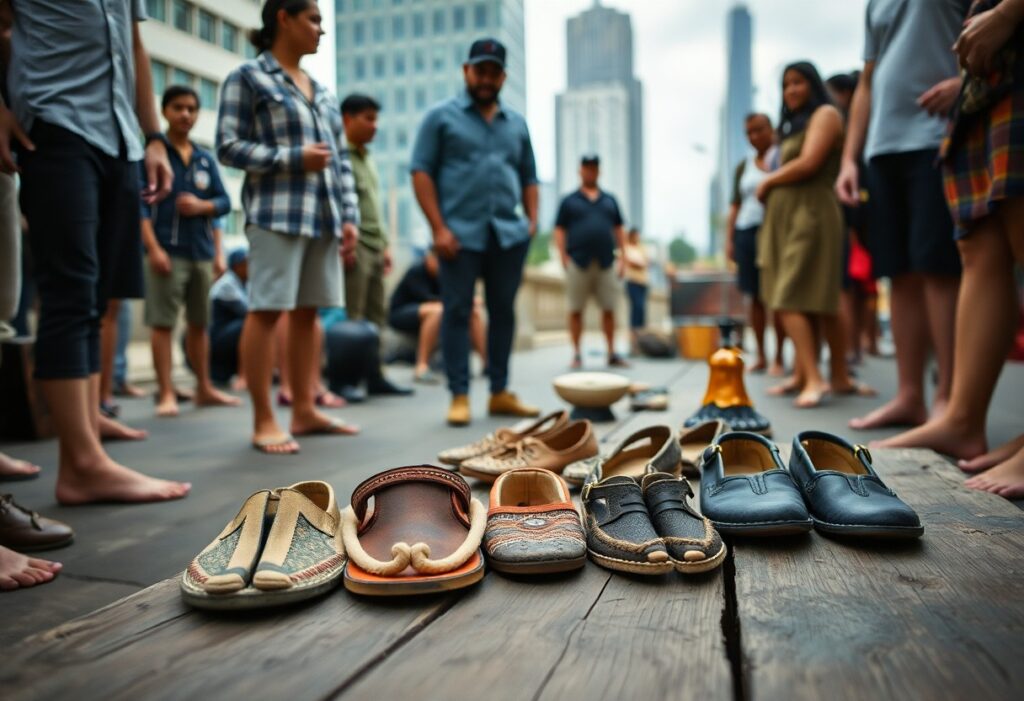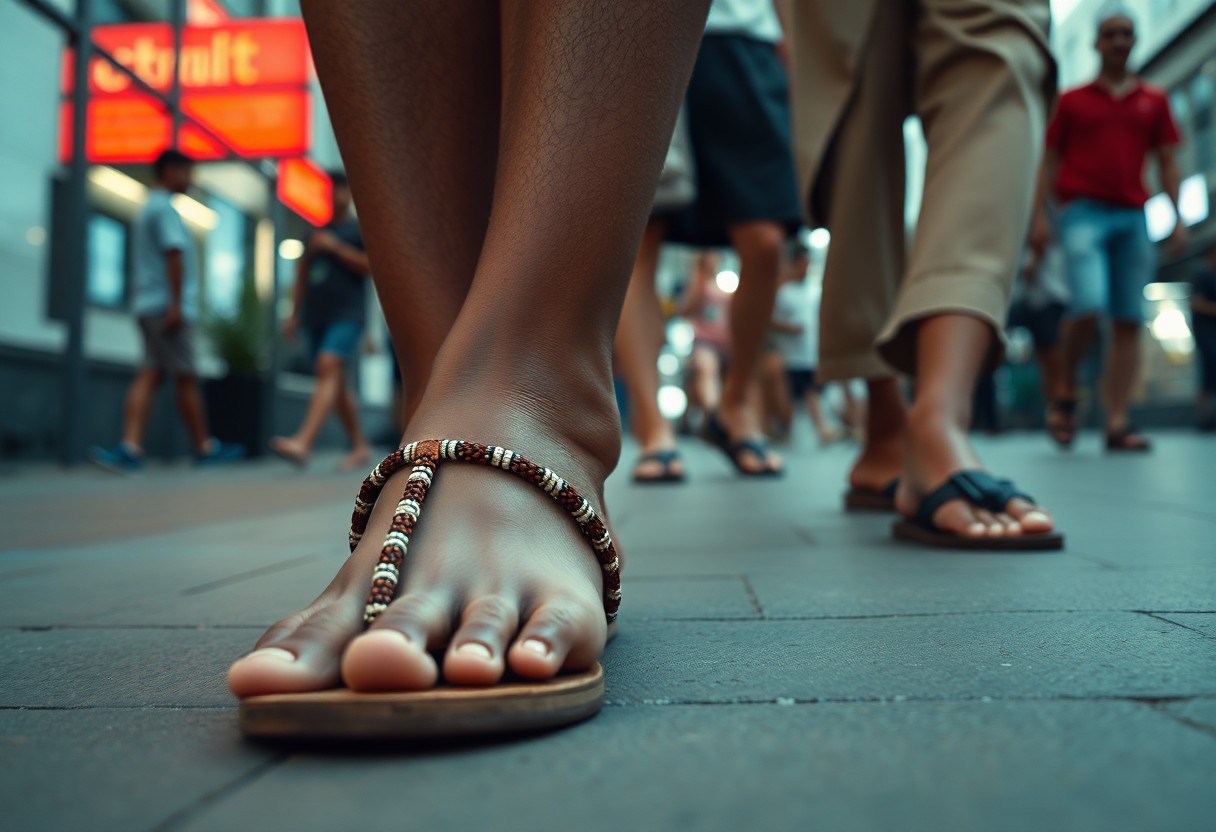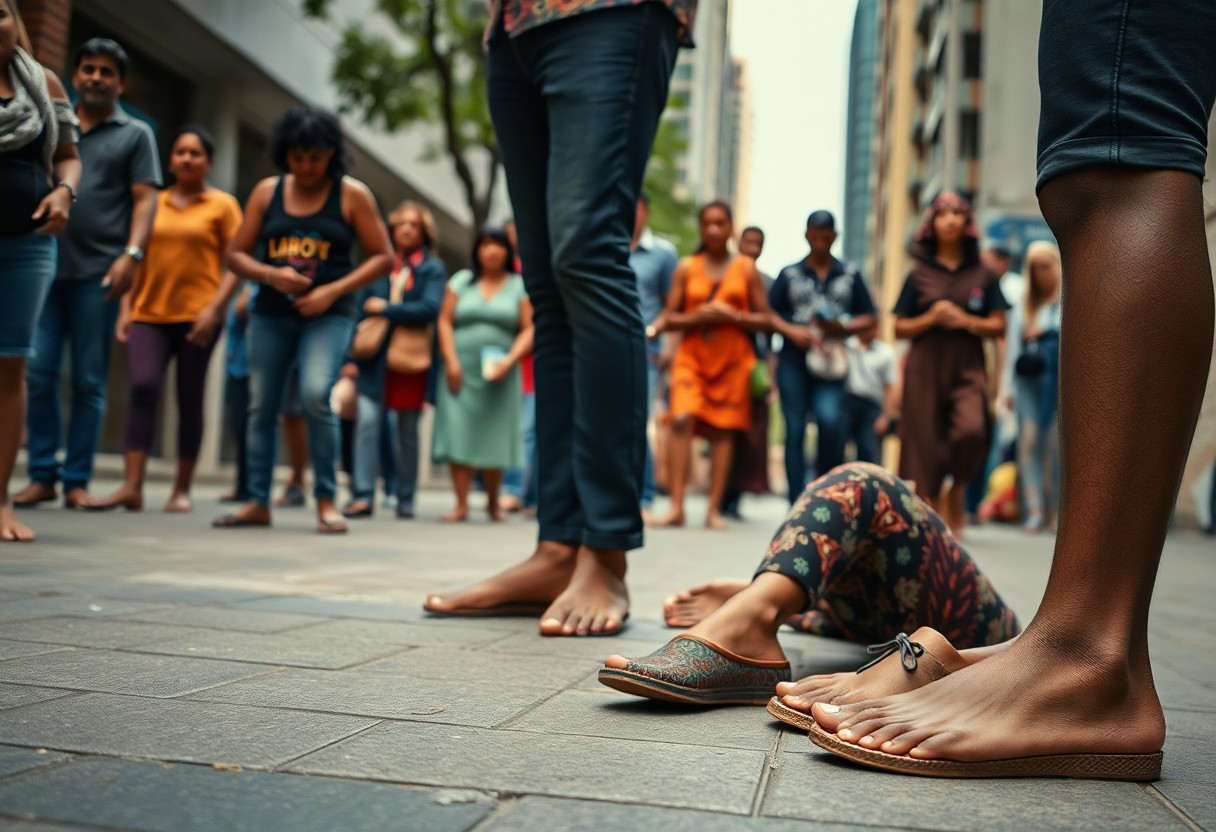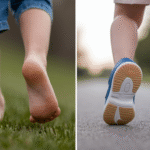
Investigating the domain of barefoot footwear through the perspective of cultural anthropology reveals captivating stories that intertwine the deep-rooted traditions of Aboriginal cultures with today's urban environments. As you immerse yourself in this fascinating transformation, you will discover how cultural beliefs and practices associated with minimalist footwear influence our perception of comfort, our relationship with the earth, and opportunities for self-expression. Grasping these themes not only broadens your understanding but also encourages a reassessment of how your choice of footwear can reflect deeper cultural significance and personal identity.

Bridging Ancient Footwear Traditions with Contemporary Innovations
The contemporary footwear market presents a vibrant tapestry that weaves together ancient traditions and modern innovations, nurturing an enhanced appreciation for barefoot footwear. This journey pays homage to traditional indigenous techniques while adapting them to suit your modern lifestyle. By acknowledging the significance of historical practices, you can uncover an exciting fusion of cultural reverence and practical aesthetics in your daily footwear selections, enriching your personal style whilst paying tribute to the past.
Contrasting Indigenous Foot Conditioning Techniques with Modern Practices
Across the globe, indigenous cultures have harnessed specific conditioning techniques to enhance their feet for various terrains. Methods such as walking barefoot on diverse surfaces have strengthened the arches and muscles in ways that many contemporary interpretations often overlook. While you may come across minimalist footwear designed to replicate these effects, they seldom provide the authentic experience of genuine contact with the earth, which is essential for fostering natural foot strength and flexibility.
Evolution of Military Footwear: From Ancient Caligae to Modern Tactical Boots
The narrative of military footwear is a compelling story of adaptation and innovation, evolving from the robust Roman caligae, designed for durability and traction, to today's tactical boots that seamlessly blend protection with agility and comfort. An analysis of these transformations reveals a consistent principle: in challenging environments, functionality reigns supreme, necessitating equipment that boosts endurance and mobility for soldiers.
The Roman caligae exemplified a sophisticated response to military requirements, crafted from durable leather with an open-toe design for ventilation. This ancient footwear featured thick soles that effectively absorbed shock and delivered essential traction, vital in combat situations. Fast forward to the modern era, tactical boots are now produced with advanced materials such as Kevlar and waterproof membranes to enhance durability and performance. These contemporary designs incorporate padded collars and state-of-the-art cushioning systems to prevent injuries during demanding military activities. By appreciating the lineage of military footwear, you can clearly discern how these historical styles have laid the groundwork for modern innovations, merging heritage, practicality, and cutting-edge technology to meet the demands of today's warriors.

Examining the Urban-Rural Footwear Disparity
The variances in footwear choices between urban and rural settings reveal significant cultural and practical differences. Urban environments often prioritise style and brand identity, while rural areas may focus more on practicality and durability. As barefoot footwear gains traction, urban dwellers increasingly adopt its minimalist design as both a fashion statement and a means to perceived health benefits. Conversely, individuals in rural settings may remain sceptical, influenced by traditional values and the practical requirements of their surroundings.
Emerging Trends in Urban Embrace of Barefoot Footwear
In metropolitan areas, a noticeable shift towards the acceptance of barefoot footwear is unfolding, with adoption rates steadily increasing over the past decade. This trend is driven by various factors, including a rise in health consciousness, a growing interest in natural movement, and the influence of fitness trends such as yoga and running. Surveys indicate that approximately 35% of urban residents have actively sought out barefoot-style shoes, highlighting a cultural shift towards embracing innovative body mechanics.
Investigating Gender-Based Barriers to Adoption: Who is Leading the Movement?
The dynamics of gender play a crucial role in the acceptance of barefoot footwear, with differing motivations affecting the choices of men and women. Women often face heightened societal pressures regarding fashion and aesthetics, which may impede their readiness to adopt minimalist styles. On the other hand, men may be more influenced by the performance and health benefits of these shoes, resulting in higher adoption rates within male demographics.
Further exploration of the gendered dimensions of barefoot footwear adoption reveals that societal expectations significantly shape women's decisions. Women frequently navigate a landscape where ideals of beauty and fashion overshadow practical health advantages. For instance, research shows that approximately 45% of men in urban areas are inclined towards barefoot shoes, compared to only 30% of women. Female consumers often grapple with balancing form and function, making them more cautious as they assess the aesthetics of barefoot footwear against their need for comfort and support. By empowering women through targeted awareness campaigns and showcasing fashionable barefoot options, there is potential to increase their willingness to embrace this trend, potentially transforming urban footwear narratives and promoting inclusivity across genders.

Innovative Advancements Shaping the Future of Barefoot Footwear
As the demand for barefoot footwear continues to surge, groundbreaking technologies are set to revolutionise your approach to comfort and performance. Progress in materials science and personalised fitting techniques will not only enhance functionality but also tailor your walking experience, blending traditional knowledge with modern design principles. You are entering a new era where your footwear becomes as unique as the journey it accompanies, leading to improved comfort and performance.
Personalisation through 3D Scanning: Creating the Ideal Fit
The emergence of 3D scanning technology is transforming the customisation of barefoot footwear, allowing for precise fits that conform to your individual foot shape. Rather than settling for standard sizes, your shoes can be meticulously crafted to reflect the contours of your feet, significantly enhancing comfort and minimising the risk of injury. Custom-fit options will not only elevate your walking experience but also make barefoot shoes more accessible to individuals with varied foot shapes and sizes.
Integrating Smart Sensors: The Future of Footwear Technology
The incorporation of smart sensors into barefoot footwear is poised to revolutionise the industry by embedding technology directly into the soles. These innovative features can monitor various metrics, from distance travelled to foot pressure, providing you with invaluable insights to optimise your walking or running habits. With real-time data at your fingertips, you can adjust your activities to enhance performance and ensure safety.
Imagine accessing real-time analytics while you walk or run. Smart sensors can analyse your gait, alerting you to any irregularities that may lead to injury. Some pioneering brands are already developing footwear capable of assessing your foot’s impact on different terrains, offering personalised recommendations for style or cushioning adjustments on the spot. This cutting-edge integration merges smart technology with the traditional barefoot philosophy, ensuring that you maintain a natural stride while leveraging the latest advancements in wearable tech. The possibilities for enhancing sports performance, rehabilitation, and everyday comfort are limitless, fundamentally redefining how you engage with your environment with every step.
Reflecting on the Evolution of Barefoot Footwear
Your exploration of the cultural anthropology surrounding barefoot footwear reveals a rich narrative woven from the strands of Aboriginal traditions to contemporary urban practices. By embracing the principles of natural movement and a connection to the earth, you glean insights into how this footwear philosophy transcends mere fashion, profoundly shaping lifestyle choices and community values. As you contemplate these diverse perspectives, consider how your footwear selections can embody and encourage a deeper appreciation of cultural heritage and adaptability in today’s society.
The Article Cultural Anthropology of Barefoot Footwear: From Aboriginal Traditions to Modern Urban Adoption appeared first on My Shoes Finder
The Article Cultural Anthropology of Barefoot Footwear: Traditions to Today Was Found On https://limitsofstrategy.com






